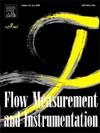The effect of channel slope on steep channel flow instability
IF 2.3
3区 工程技术
Q2 ENGINEERING, MECHANICAL
引用次数: 0
Abstract
Flow instability impacts negatively on hydraulic structures. Changes in water pressure or the periodic impact of water flows cause structural damage to channels. The rapid increase in water depth leads to overflows or sprays, which erode soil adjacent to channels. In this study, flow instability was examined through the basis of theories and experiments. The theoretical discriminants for flow instability were inferred by Vedernikov number and the effect of slopes on the Froude number was considered. A rectangular cross-section channel was selected for the experiments. The experimental results were compared with theories, it was shown that when the flow conditions were on the margin of instability, the discriminant established by this study is able to accurately determine the occurrence of instability. Through this new discriminant, the discrepancy which appears in traditional method can be avoided. The presented results are ideal for channel design and offer new approaches for flow instability prevention.
河道坡度对陡坡河道水流失稳的影响
流动失稳对水工建筑物有负面影响。水压的变化或水流的周期性冲击会对河道造成结构性破坏。水深的迅速增加导致溢流或水雾,侵蚀河道附近的土壤。本文在理论和实验的基础上对流动不稳定性进行了研究。利用维德尔尼科夫数推导了流动不稳定性的理论判别式,并考虑了坡度对弗劳德数的影响。实验选择矩形截面通道。将实验结果与理论结果进行了比较,结果表明,当流动条件处于失稳边缘时,本文建立的判别法能够准确判断失稳的发生。通过这种新的判别方法,可以避免传统方法中出现的差异。本文的研究结果为通道设计提供了理想的依据,并为防止流动不稳定提供了新的途径。
本文章由计算机程序翻译,如有差异,请以英文原文为准。
求助全文
约1分钟内获得全文
求助全文
来源期刊

Flow Measurement and Instrumentation
工程技术-工程:机械
CiteScore
4.30
自引率
13.60%
发文量
123
审稿时长
6 months
期刊介绍:
Flow Measurement and Instrumentation is dedicated to disseminating the latest research results on all aspects of flow measurement, in both closed conduits and open channels. The design of flow measurement systems involves a wide variety of multidisciplinary activities including modelling the flow sensor, the fluid flow and the sensor/fluid interactions through the use of computation techniques; the development of advanced transducer systems and their associated signal processing and the laboratory and field assessment of the overall system under ideal and disturbed conditions.
FMI is the essential forum for critical information exchange, and contributions are particularly encouraged in the following areas of interest:
Modelling: the application of mathematical and computational modelling to the interaction of fluid dynamics with flowmeters, including flowmeter behaviour, improved flowmeter design and installation problems. Application of CAD/CAE techniques to flowmeter modelling are eligible.
Design and development: the detailed design of the flowmeter head and/or signal processing aspects of novel flowmeters. Emphasis is given to papers identifying new sensor configurations, multisensor flow measurement systems, non-intrusive flow metering techniques and the application of microelectronic techniques in smart or intelligent systems.
Calibration techniques: including descriptions of new or existing calibration facilities and techniques, calibration data from different flowmeter types, and calibration intercomparison data from different laboratories.
Installation effect data: dealing with the effects of non-ideal flow conditions on flowmeters. Papers combining a theoretical understanding of flowmeter behaviour with experimental work are particularly welcome.
 求助内容:
求助内容: 应助结果提醒方式:
应助结果提醒方式:


